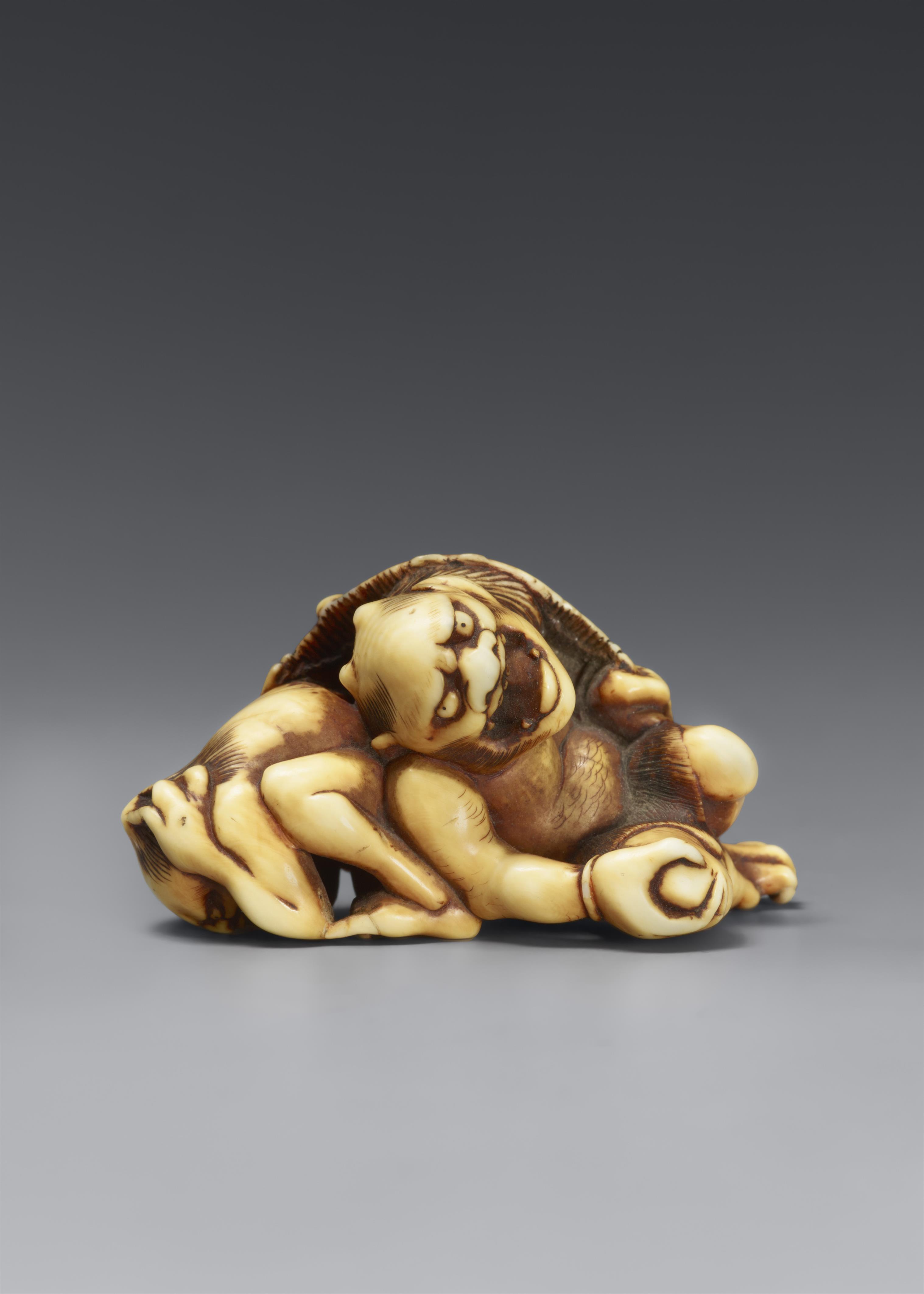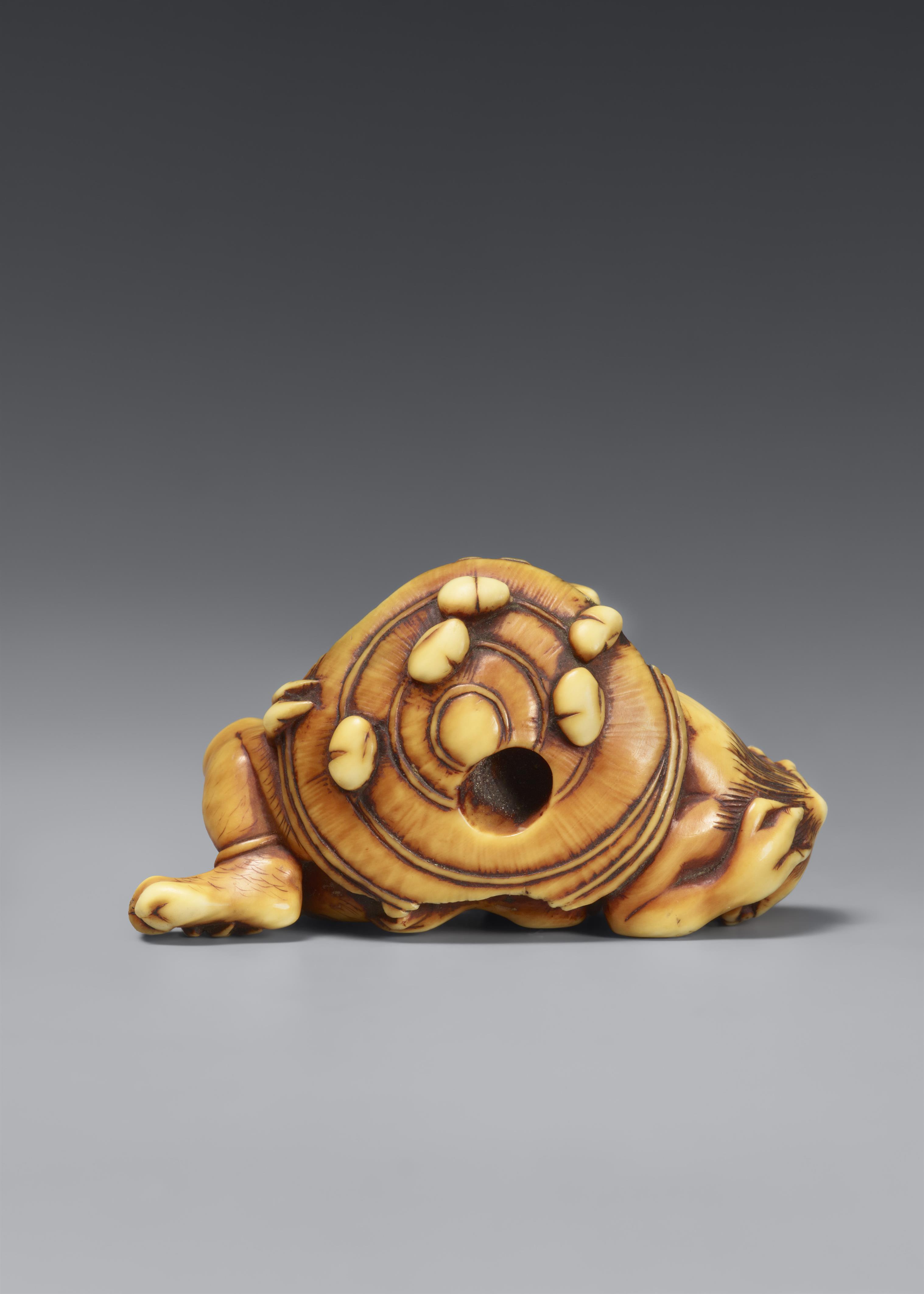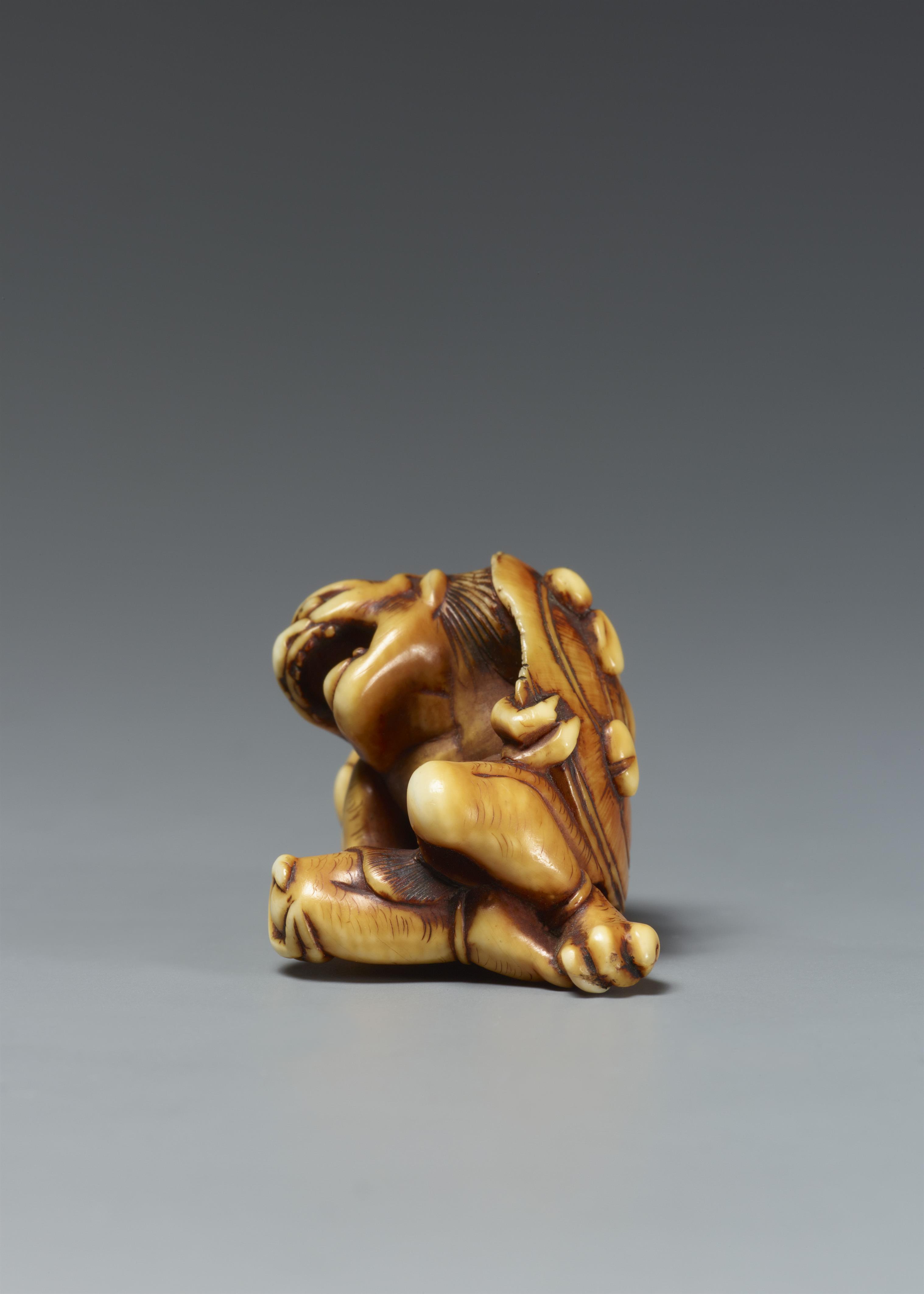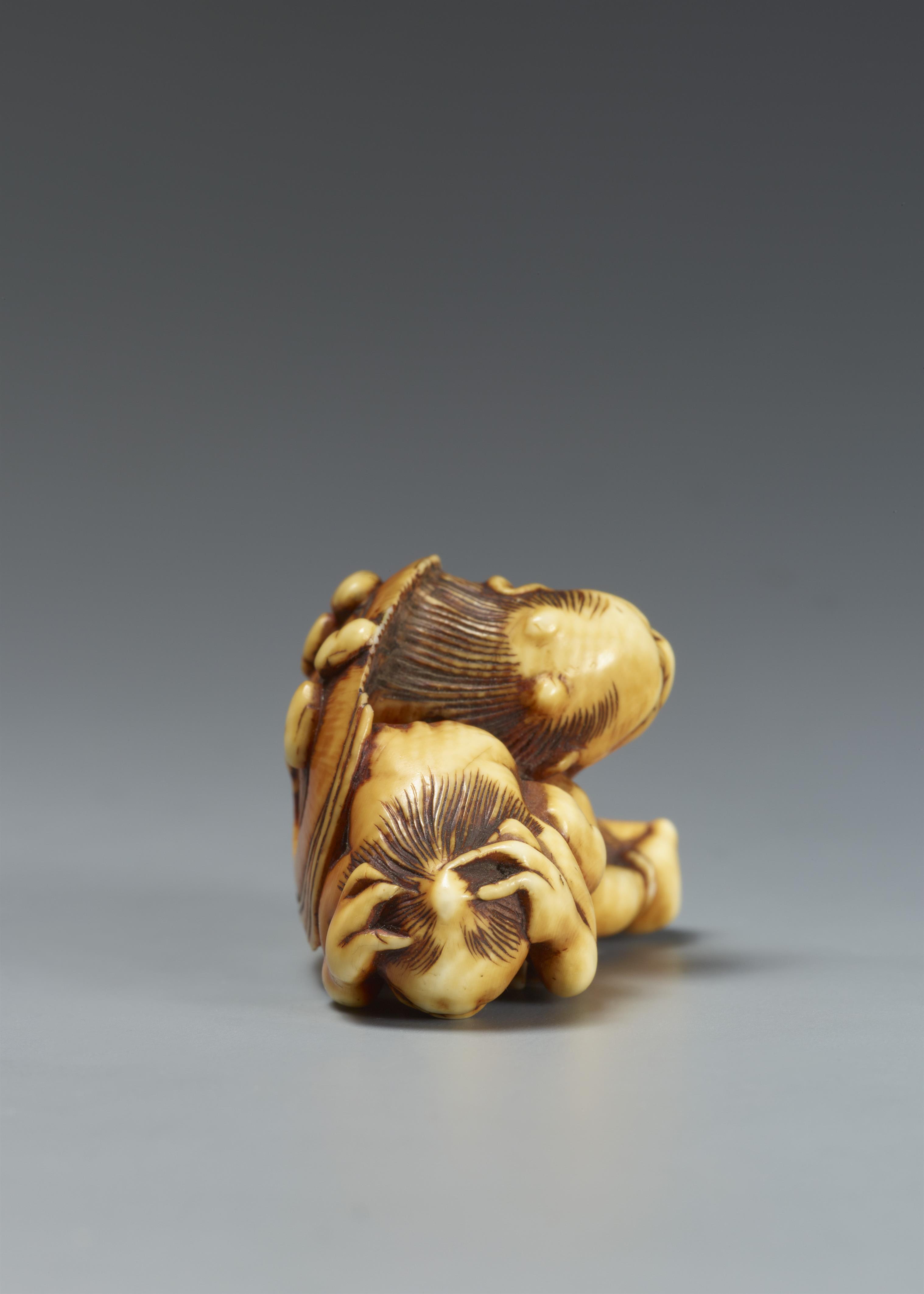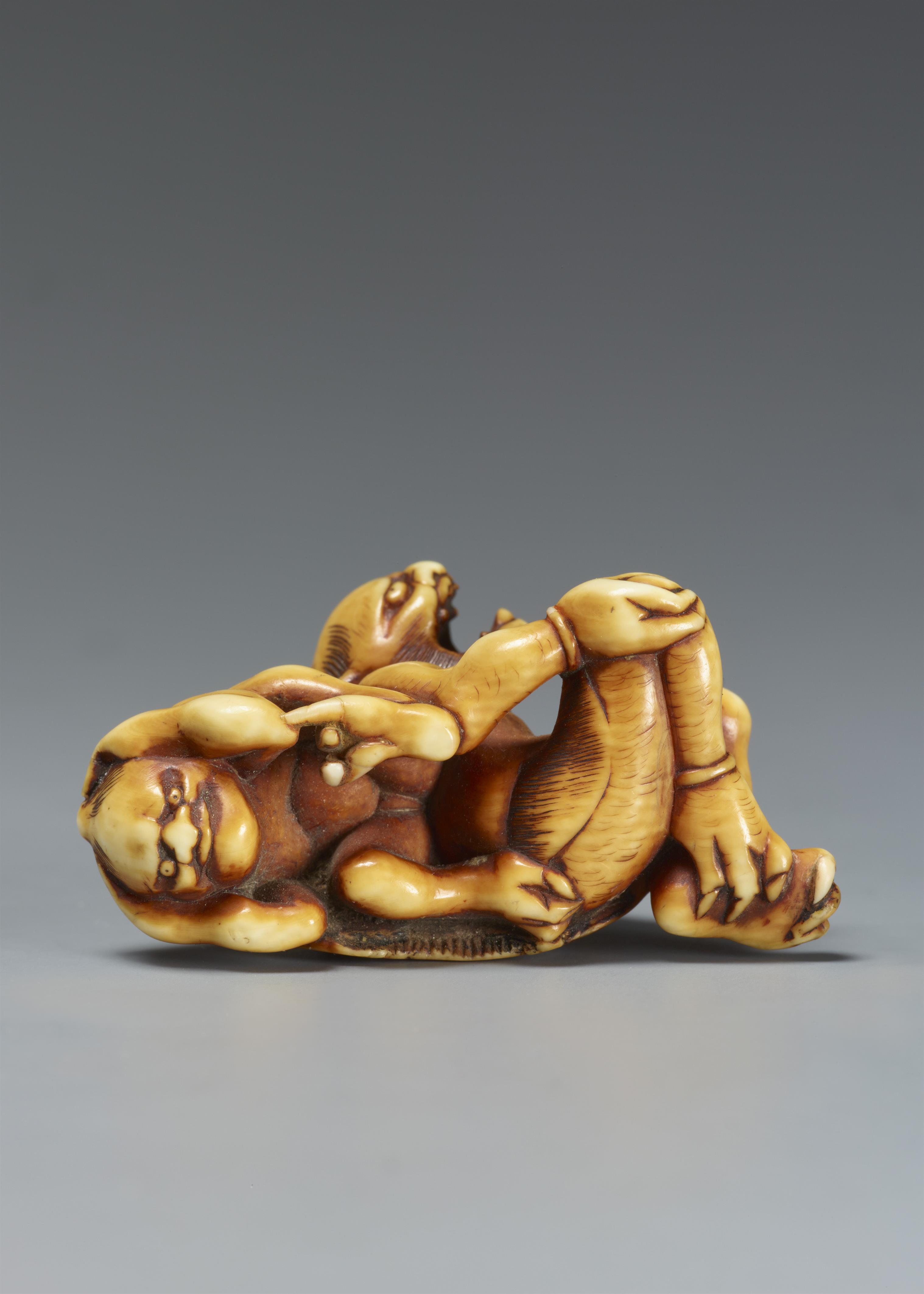A partly stained ivory netsuke of two oni at setsubun. Hakata, attributed to Otoman. Ca. 1830
An angrily shouting two-horned oni protects himself with a large straw hat against the beans being thrown at him, while a smaller one-horned oni crouches beside with hands covering his head for protection.
Height 2.3 cm; length 4.1 cm
For a while now, the term "Hakata School" has been circulating among netsuke connoisseurs. Hakata is the port city of Fukuoka, the former seat of the Kuroda daimyô family, in Chikuzen Province, now Fukuoka Prefecture on Kyûshû Island. Four netsuke carvers known by name lived in Hakata. Bokugyuken Toshiharu 牧牛軒利治 (d. 1859) has to be named first. His existing netsuke however make it impossible to make out a style that was transmitted to his pupils: Matsushita Otoman (Otomitsu) 松下音満; Nakamura Riman (Toshimitsu) 中村利満 (1800/1801-1861), by whom no netsuke seem to be known, and Nakanoko Yoshibei 中ノ子吉兵衛, who is generally associated with the making of dolls.
The Hakata style of netsuke is therefore the style of Otoman, whose active period is documented for the years from 1823 to 1829. This is the period in which Otoman carved a netsuke set of zodiac animals commissioned by Philipp Franz von Siebold (1796-1866). Otoman’s trademark is the tiger, whose pitch-black fur engravings stand out strikingly against the white of the ivory.
But Otoman also created numerous figure netsuke which occasionally tend towards a certain grotesqueness. With the heads of his oni or legendary figures, one never quite knows whether they are laughing or screaming. The mouths form a rectangle with a row of teeth in the upper jaw and a deep, black oral cavity. The off-centre placement of the black inlaid pupils gives the faces a roguish expression. An unsigned oni yarai netsuke attributed to Otoman similar to one offered here was published in Expressions of Style, Netsuke as Art, Scholten Japanese Art, New York 2001, Nr. 67.
Certificate
Sales permit for the EU internal market available
Provenance
Private collection, Düsseldorf
Literature
Cf. a stylistically close piece attributed to Otoman in: Rosemary Bandini, Expressions of Style. Netsuke as Art. New York 2001, p. 53, cat. no. 67

